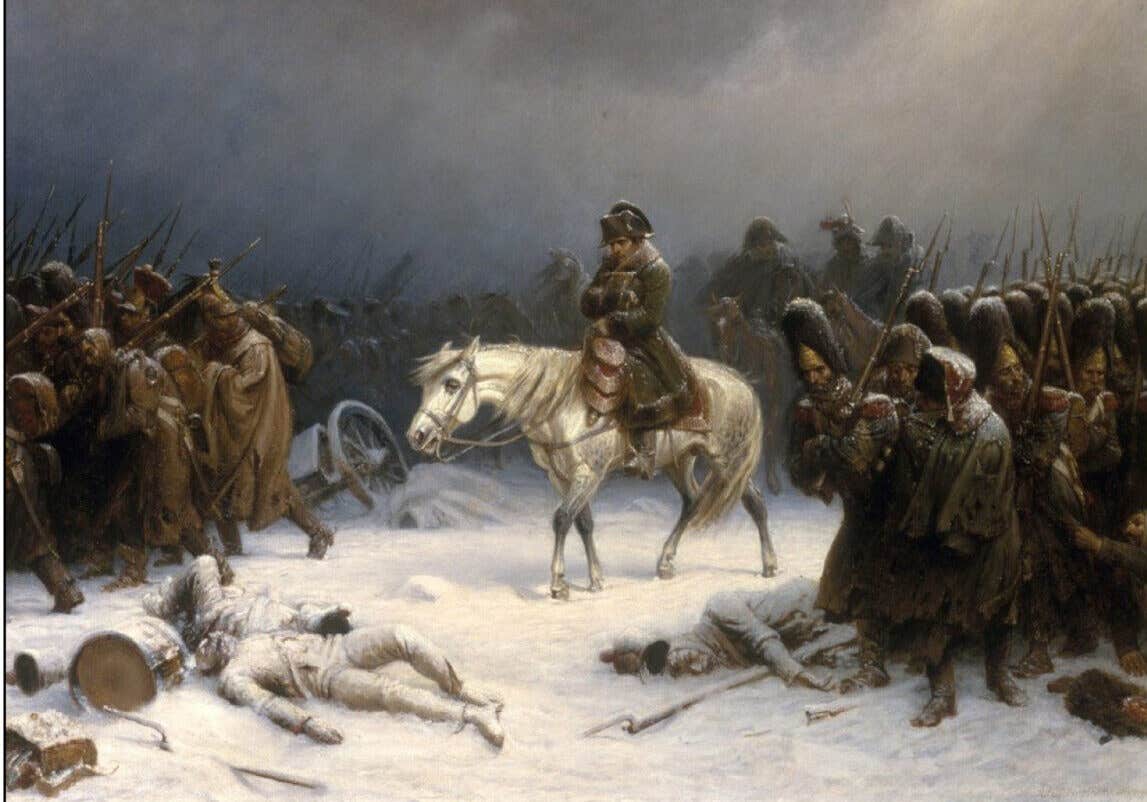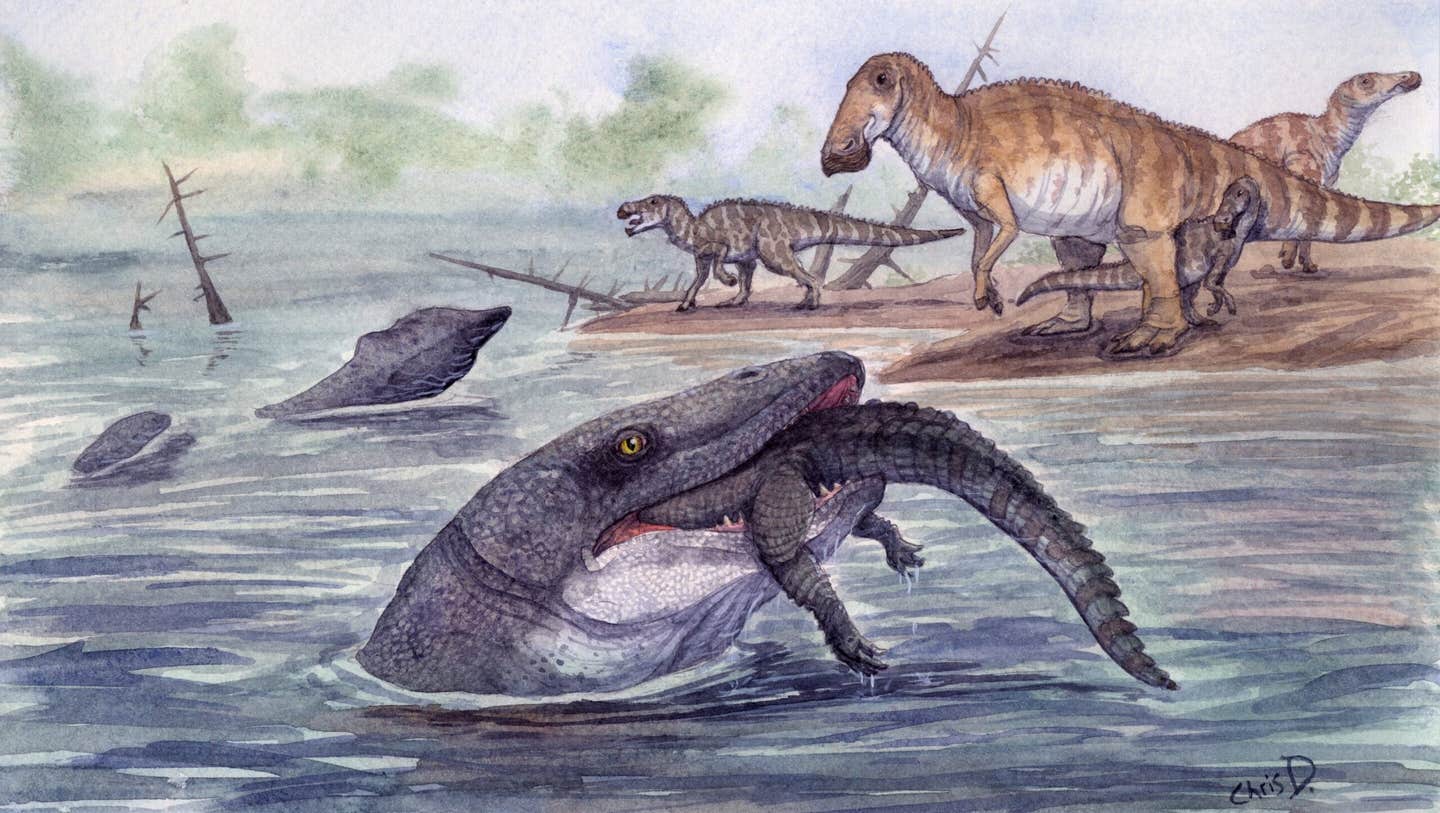New study uncovers what stopped Napoleon’s army during the retreat from Russia in 1812
Genetic evidence shows Napoleon’s troops were struck by paratyphoid and relapsing fever during their 1812 retreat.

 Edited By: Joseph Shavit
Edited By: Joseph Shavit

Painting dating from 1851 entitled “Napoleon’s retreat from Moscow” by Adolph Northen, depicting the conditions of the retreat of Napoleon’s army. (CREDIT: Current Biology)
When Napoleon's once invincible army limped out of Russia in winter 1812, frostbite and hunger were merely half the story. Historians have debated for more than two centuries over which diseases killed so many soldiers on that disastrous retreat. Typhus was the prime suspect.
But a new genetic study in Current Biology paints a different picture—a web of infections plotting to bring down the French Empire's greatest military force.
Using advanced DNA sequencing on teeth dug up from a mass grave in Vilnius, Lithuania, researchers identified genetic traces of Salmonella enterica Paratyphi C, the parasite causing paratyphoid fever, and Borrelia recurrentis, the causative agent of louse-borne relapsing fever. These results challenge the classical typhus hypothesis and demonstrate that Napoleon's troops fell victim to simultaneous epidemics of foodborne and lice-borne pathogens.
Ancient DNA, Modern Tools
The researchers, from the Microbial Paleogenomics Unit at Paris's Institut Pasteur, teamed up with researchers at Aix Marseille University and the University of Tartu in Estonia. They used DNA from 13 soldiers who were dug up in 2002 from the Vilnius site, a mass grave that held thousands of remains from the 1812 retreat. Every tooth yielded about 20 million DNA reads—short genetic snippets that were compared with microbial databases containing 185 known human pathogens.
From that vast database of information, only two offenders remained: S. enterica Paratyphi C and B. recurrentis. Four soldiers were positive for paratyphoid fever on the genetic level, one for relapsing fever, and one had symptoms of both diseases. The scientists ruled out other common diseases such as epidemic typhus (Rickettsia prowazekii) and trench fever (Bartonella quintana), which were suspected for centuries.
The team's authentication process was rigorous. The fragments of DNA would need to display the typical chemical degradation of materials hundreds of years old—short in length and cytosine deamination. The genetic fragments were placed into evolutionary trees in order to confirm their relationship to modern strains. These extra steps secured that the bacteria were not false positives caused by the contamination of modern organisms.
What the Soldiers Faced
Traditional accounts record that troops suffered incessant diarrhea, fever, and exhaustion during the retreat. A few consumed salted beets and even drank brine from pickling barrels when clean water ran out. Given such adverse conditions, the spread of paratyphoid fever, spread by contaminated water and food, was virtually unavoidable. Relapsing fever, spread by lice, would have been just as calamitous, resulting in periodic high fever, followed by temporary recovery, followed by relapse.
Every one of these diseases provokes extreme fevers, fatigue, and gastrointestinal distress—symptoms that would have worsened the ordeal of already starvation- and cold-weakened soldiers. Combined with frostbite and fatigue, these illnesses most likely accelerated the breakdown of the army. Of the approximately 500,000 men who marched into Russia, fewer than a tenth lived to come out.
A Complex Web of Disease
Previous research in 2006 indicated typhus, but DNA technology was not sophisticated enough at the time to determine the species. The new sequencing technologies altered that, uncovering a more complex epidemic.
"Having access to the genomic information of pathogens that circulated among past populations enables us to study how diseases have evolved and transmitted," said Nicolás Rascovan, chief of the Microbial Paleogenomics Unit at the Institut Pasteur and lead author on the research. He explained how this genetic view enables researchers to link ancient records with specific microbes, shedding light on which diseases actually shaped world events.
The researchers' evolutionary analysis placed the Vilnius Salmonella isolates in the Paratyphi C line that had been circulating around Europe for centuries. Meanwhile, the Borrelia recurrentis isolate was an ancient European lineage before the contemporary forms, showing that the pathogens have deep roots on the continent in the past.
Reading History in DNA
The secret to the success of this study is that it has paired state-of-the-art genomics with serious verification. Scientists built what they called a "phylogeny-driven workflow," using low-coverage ancient DNA to trace diseases back in time. The technique can confirm infections even if only a handful of dozens of DNA fragments are left—a first for historical microbiology.
These methods open new avenues to investigate other ancient pandemics. With each reconstructed chunk of bacterial DNA, researchers can now revisit centuries-long epidemics that shaped wars, migrations, and social uprisings. Teeth and bones turn into archives, containing microscopic histories of the human experience with disease.
A Tragedy of Many Fronts
The find does not rule out typhus altogether. Two centuries of DNA breakdown could have eradicated it from the specimens. However, the established presence of S. enterica and B. recurrentis demonstrates that Napoleon's troops were exposed to more than one microbial hazard. Infection on the 1812 battlefield was not a lone epidemic—it was an epidemic tempest of infections driven by hunger, dirt, and fatigue.
To researchers, the story underlines that war's most lethal killers are often out of sight. Frostbite and starvation may have weakened Napoleon's army, but bacteria finished what Russian winter had begun.
Practical Applications of the Research
The research illustrates how modern genetic techniques can uncover forgotten medical histories and help scientists discover how disease-causing microorganisms change and survive.
By learning which microbes caused past epidemics, researchers can trace their evolution and anticipate diseases' and resistance's future behavior. Outside the past, these methods could also give us new insight into how we track outbreaks today—especially those with multiple pathogens.
Understanding how food-borne and louse-borne disease coexisted during one of the greatest breakdowns in war history may also inform us how to address disease outbreaks in modern-day humanitarian crises.
Research findings are available online in the journal Current Biology.
Related Stories
- Ancient DNA reveals 2,500 years of human movement and change in the South Pacific
- DNA from long-extinct branch of the humanity boosted survival rates for early Americans
- Human genome mapping uncovers 50,000 mysterious DNA structures
Like these kind of feel good stories? Get The Brighter Side of News' newsletter.
Rebecca Shavit
Science & Technology Journalist | Innovation Storyteller
Based in Los Angeles, Rebecca Shavit is a dedicated science and technology journalist who writes for The Brighter Side of News, an online publication committed to highlighting positive and transformative stories from around the world. With a passion for uncovering groundbreaking discoveries and innovations, she brings to light the scientific advancements shaping a better future. Her reporting spans a wide range of topics, from cutting-edge medical breakthroughs and artificial intelligence to green technology and space exploration. With a keen ability to translate complex concepts into engaging and accessible stories, she makes science and innovation relatable to a broad audience.



